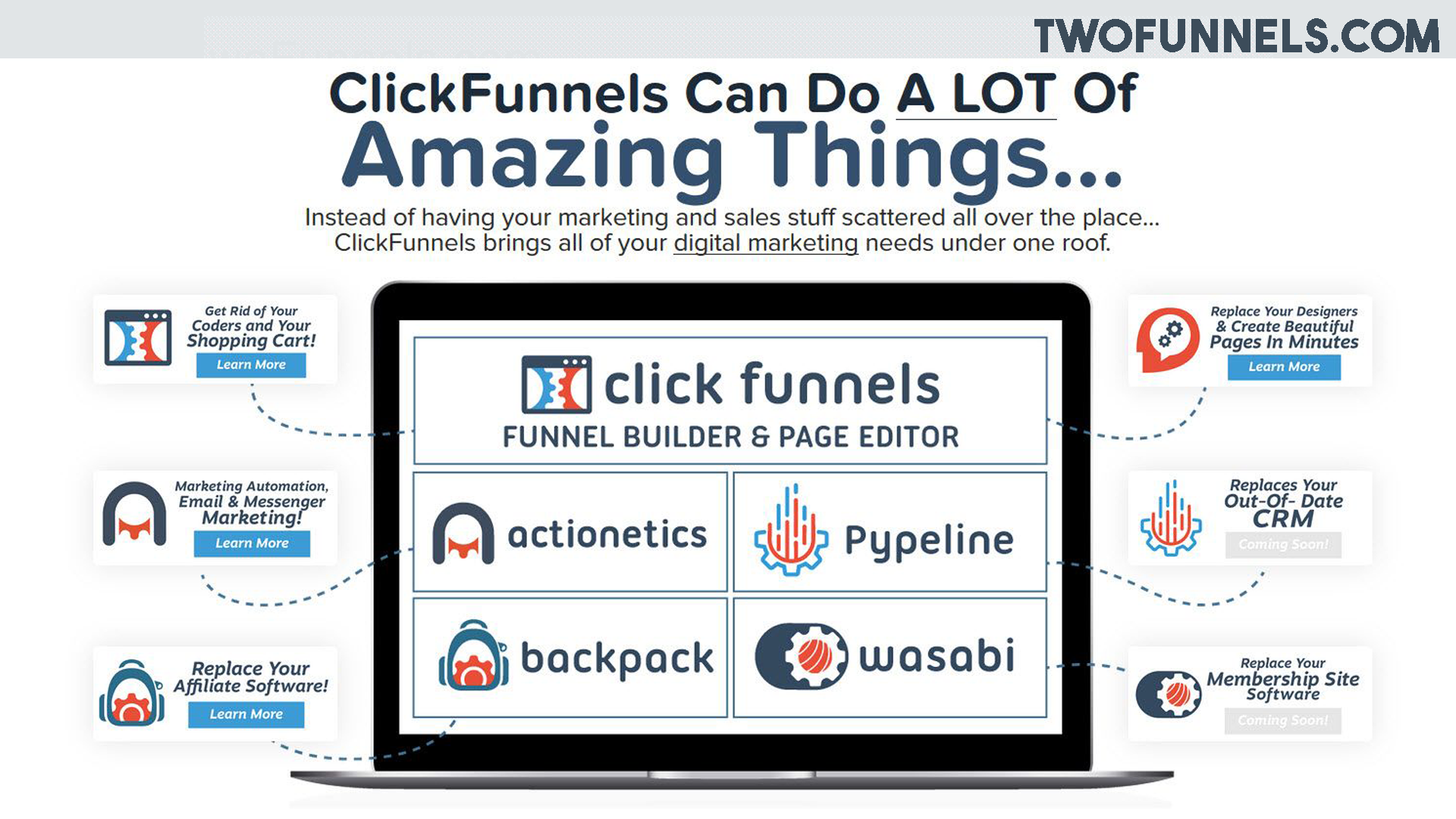Clickfunnels ReviewTable of Contents1 What is a Sales Funnel?2 My favourite features3 How to Funnel Hack Your Competitors1. List Your Competitors2. Engage, Document, and Analyze
ClickFunnels, is the easiest and simplest way that you are going to make high converting sales funnels and marketing funnels.
This is a tool created exclusivelly to convert your potential clients into customers in Clickfunnels .
Clickfunnels is actually a all in one solution to develop sales funnels.
It also includes landing pages, email integrations, invoicing for your clients, etc…
For that reason is not strange that has become the favorite tool for marketers in the last year.
In fact, if you’ve ever sold a product or service, you already know how frustrating and painful creating a genuinely valuable offer can be only to have it disappear into the wasteland of failure.
What is a Sales Funnel?
Answering the question, “What is a sales funnel?” is no easy take (that’s why we wrote an entire article on the subject). By way of offering a simplified definition …
A sales funnel is a marketing strategy designed to turn cold prospects into long-term customers by funneling them through five stages. The “funnel” metaphor means you’ll begin with a large audience of prospective buyers that will eventually pare down to a smaller group of highly-targeted, high-value customers.
Don't Forget At the biggest of big picture, funnels are usually divided into Five parts:
- You offer something free to provide some value and to collect his e-mail.
- After getting his email you can offer him a relevant offer.
- This lead becomes your consumer.
- Start contact with him via e-mail providing him value.
- You start building a strong relationship with him and selling him more things.
This process can be understood in a easier way by looking to the following ClickFunnels infographic:

The final goal is not to make a sale, at least not a single sale. Instead the goal is create returning customers with life-time value.
For a small business owner, you may start with only one or two products. For a large B2B company, you may have numerous offers fueling lead generation and nurturing new leads through the sales cycle, sales pipeline, or sales team.
My favourite features
* Create Web Pages in a fast way using Templates and Elements *.
It’s important to recognize that a funnel is a collection of web pages assembled in a calculated order instead of Clickfunnels .
All you need to do is to drag and drop the different components on the page and change the text as well as the appearance to fit your needs.
The great news are that you don’t need to code anything!

How to Funnel Hack Your Competitors
1. List Your Competitors
Your main focus, of course, will be on your direct competition. Make a list of all known companies that sell similar products or services to yours.
You also want to consider looking into your indirect competition, as well. Here, you’ll be considering companies who don’t necessarily sell within your niche, but whose audience overlaps with your own.
In doing so, you’ll be able to gain a better understanding of the sales tactics that get your target audience to take action.
Stay broad as you start out. While you’ll eventually pare down your list to your most-successful competitors, you also want to take note of competing companies whose approach isn’t as effective as it could be — allowing you to avoid making the same mistakes.
2. Engage, Document, and Analyze
More than simply checking out your competitors’ websites, landing pages, and other marketing content, you’ll want to take screenshots and create swipe files. As you do so, be sure to categorize these artifacts accordingly.
We advise you create separate folders for Bait, Frontend, and Backend offers for each competitor you analyze. You also may want to create a folder specifically for documenting ad creatives — which you can further categorize based on the medium the creative is presented on (e.g., Google, Facebook, etc.).
At this point, you don’t necessarily need to engage too far with your various competitors — especially if doing so requires that you spend money on their products or services.
You do want to take as many preliminary steps as you can — such as signing up for mailing lists, requesting additional information, and downloading free content.
Once you’ve amassed a robust collection of artifacts, you’ll then want to start analyzing them from a number of different vantage points.
This involves asking blue-print type questions:
- What words (copywriting) are they using in their headlines?
- What colors are they using throughout their content?
- Are buttons located above the fold or below the fold?
- Do they use videos and images, or just text?
- Are they listing benefits or features?
- Do they include social proof like testimonials?
- Are there any pop-ups during exit intent?
- Is the header section of the site fixed?
- Is there a full sign up form or an opt-in form?
- Do action steps require more than one touchpoint?
- Is price mentioned for their products (if so, what are their price points?)
- How many words are there on the homepage?
The idea is to take note of as many different aspects as possible — and to understand why your competitors decided to take the approach they did.
(It’s actually much more important to focus on the “whys” behind these surface-level questions. Remember, you’re not necessarily going to copy your competition — but you will be implementing their successful approaches in your own way as you create your own funnels.)
As you find the answers to these questions, make sure to document this information within the folders you’ve created.

